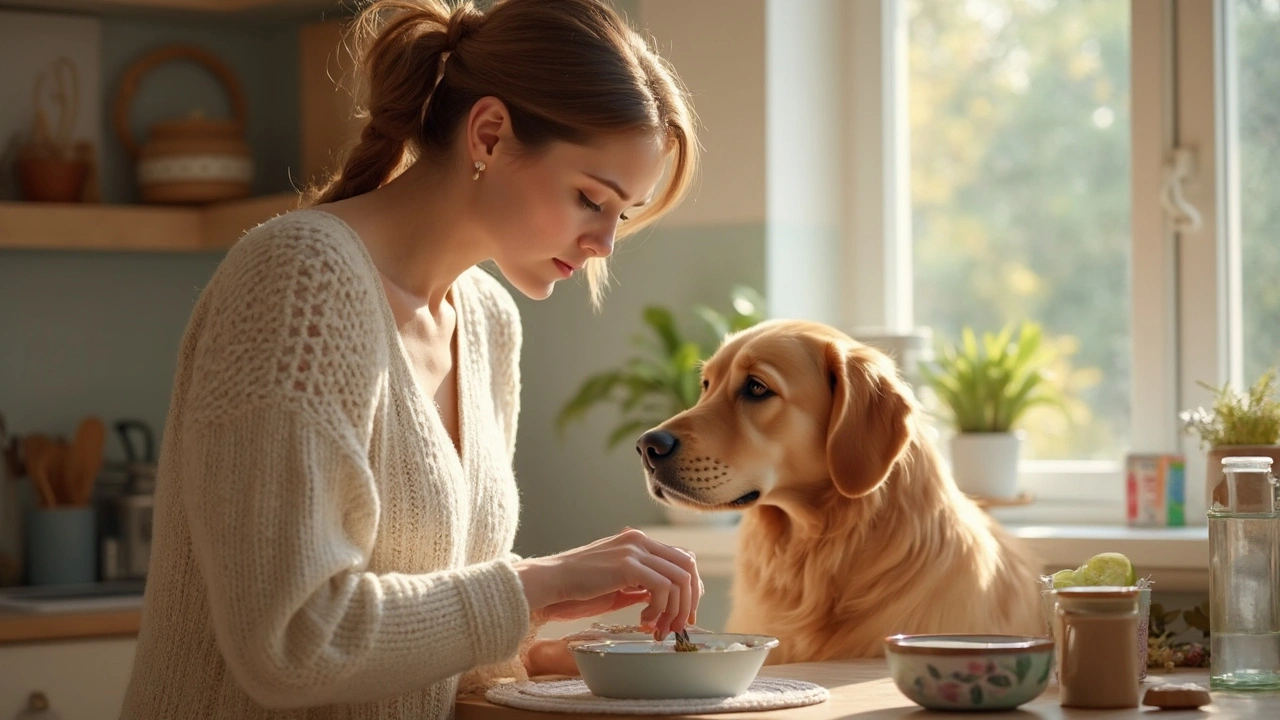Dog Feeding Schedule: Simple Routine for Puppies and Adult Dogs
Is your dog begging at odd hours or gaining weight despite normal walks? A clear feeding schedule fixes that fast. This guide gives short, practical rules you can use today to set meal times, control portions, and keep your dog steady and healthy.
Puppies need more frequent meals because they burn energy fast. From 8 to 12 weeks feed four times a day. From three to six months drop to three meals. By six months most puppies can eat twice daily. Small breeds often need one extra snack because their blood sugar drops quicker.
Adult dogs usually do best on two meals a day: morning and late afternoon or early evening. Spacing meals about 8 to 12 hours apart helps digestion and reduces begging. Senior dogs may prefer smaller, more frequent meals if they lose appetite or have dental problems.
When and how much to feed
Start with the feeding guideline on the bag, then adjust by watching your dog. That label gives calories per cup — use it with your dog’s ideal weight. A simple trick: measure food with a dry cup or scale. Eyeballing leads to slow weight creep.
Keep water available at all times but avoid heavy exercise right after meals. For big breeds, wait at least an hour after eating before vigorous activity to lower the small risk of bloat. If your vet prescribes a calorie target, divide it by meal count to get exact portions.
Free-feeding (leaving food out all day) can cause overeating and makes training harder. Use set meal times instead. If your dog refuses food, note any other symptoms and call your vet if refusal lasts more than 24 hours.
Treats, transitions and special cases
Treats should be under 10% of daily calories. Use kibble as training rewards to avoid extra calories. When switching foods, mix new with old over 7 to 10 days: 25% new day one, 50% day four, 75% day seven, then full new food. This reduces tummy upset.
If your dog takes medication, feed exactly as your vet instructs — some meds need food, others an empty stomach. For weight loss, cut portions by 10-20% and increase walks. For weight gain, check for high-calorie treats or table scraps and swap to low-calorie snacks.
Make mealtime consistent. Feed in the same spot, at the same times, and use the same dish when possible. Consistency helps digestion and reduces anxiety. Keep a simple daily log for a week if you’re unsure about portions — record meal times and amounts, then tweak based on weight and energy.
Quick checklist: weigh your dog once a month, measure food with a proper cup or scale, note treats and table scraps, keep meals at consistent times, and ask your vet about special diets or supplements. If you see steady weight gain or loss over two weeks, schedule a vet visit. Small changes now save trouble later. Start the routine this week and track results daily.

